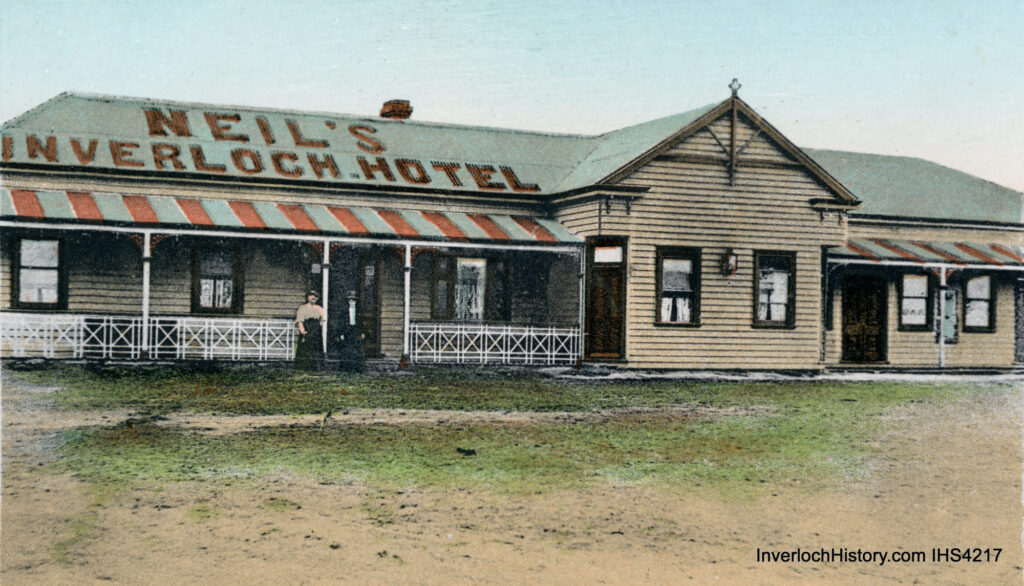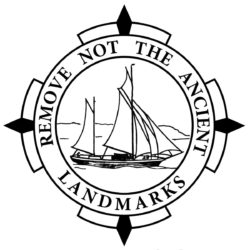The remains of this protected historic shipwreck are buried near the lnverloch Surf Life Saving Club.
The AMAZON was a barque of 362 tons built by at St Helier’s, Jersey, by Fredrick Charles Clarke, ship-builder.
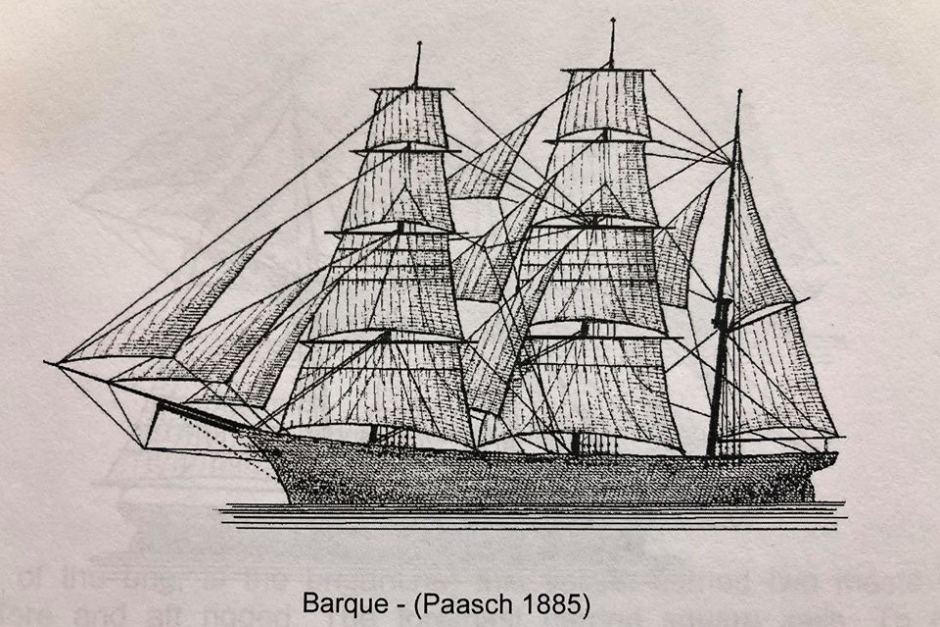
(Source: Heritage Victoria)

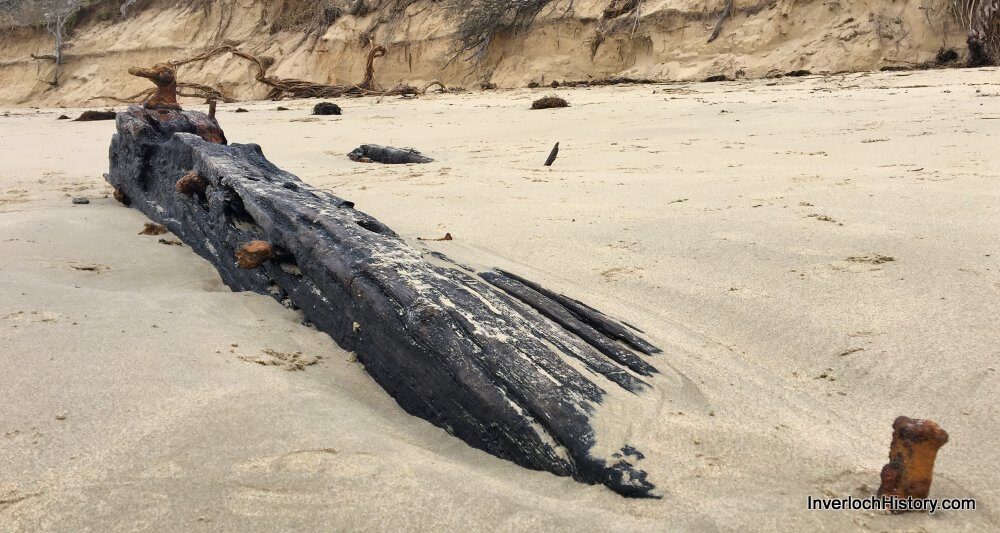

2018 Investigation by Heritage Victoria
Site investigation undertaken at Inverloch Surf Beach during Nov — Dec 2018 by Heritage Victoria.
Dr Maddy McAllister has completed her report on this heritage project and provided the following copy to the Society.
Follow this link to download the report (70 page PDF document)…
General History
The Melbourne Argus newspaper reported the loss of the Jersey-built barque AMAZON near Cape Paterson and the despatch of HMCS Victoria to rescue the crew in late December 1863. According to the newspaper accounts, the barque left Melbourne on Dec 12 1863 bound for Mauritius with a cargo of salted meats. During the night a gale blew up from the south, the sails were reefed and the vessel hove to. Despite all attempts the Amazon started to drift leeward towards the shore. On the morning of the 15 December 1863 the vessel came ashore on a sandy beach, close to some cliffs one mile south west of Andersons Inlet. The fore and main masts were cut away to prevent the vessel from breaking up. The crew got ashore and set up camp. The wreck was discovered eight days later by a Mr Heales on his way to Melbourne to spend Christmas with his family. HMCS Victoria was despatched to rescue the crew. The vessel was put up for auction on 31 December 1863. The location was given as one mile south west of Andersons inlet and eight miles east of Cape Paterson, lying broadside to the beach and buried to a depth of nine feet in the sand. The water in the hull was level with the lower deck beams.
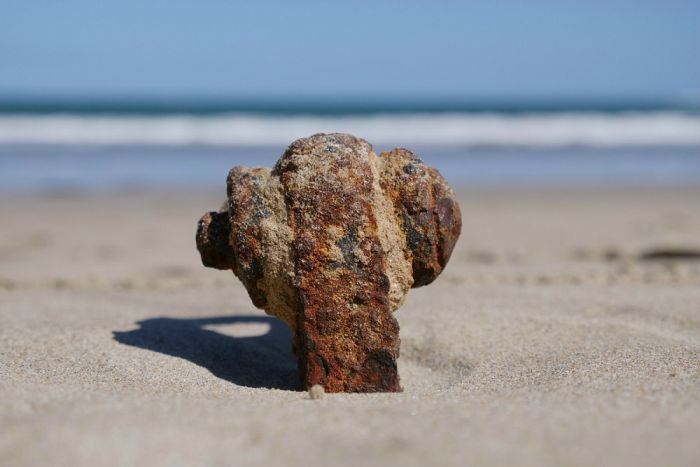
(Source: ABC Gippsland – Nicole Asher)
Significance assessment
Source: Australian National Shipwreck Database
Amazon is archaeologically significant as a rare example of an international wooden trading ship from the mid-19th century. Amazon is historically significant for its contribution to Victoria’s economy in the 1800s and has the potential to shed light on meat packing and transporting practices from that time. Amazon is a representative example of mid-19th century wooden cargo carriers and while Victoria has a number of iron and steel international cargo carrying shipwrecks, Amazon is rare as the only wooden vessel of this type so far located in Victorian waters.
Criterion 1. Historic
Amazon is historically significant as an example of a mid-19th century wooden international trading vessel that contributed to Victoria’s economy in the 1800s. Built in 1855 in Jersey, one of the British Channel Islands, the ship may have historical insights into the shipbuilding tradition of that era.
Criterion 2. Technical
Wooden three-masted barques were the more common types of deep-water international cargo carriers in the mid-19th century. The technical significance of the vessel cannot be determined without further research, but may offer some technical significance of Jersey shipbuilding.
Criterion 3. Social
Social significance is minor although there are echoes of the wrecking of the Amazon at Inverloch as the entrance to Wreck Creek (named for the wreck) is approximately 20 metres to the east of the site. When Amazon ran aground on the beach, this area of coastline was deserted and the crew were lucky Mr Heales passed by on his way to Melbourne. Due to the limited exposure of the wreck since 1863, the local community do not appear to have embraced the wreck site until the recent exposure.
Criterion 4. Archaeological
The archaeological potential of the wreck is still to be determined. The exposed frames and ballast mound at the low tide mark is jumbled and much of the context may not be in its original form. However, the fact that the wreckage does not appear to have been exposed often since the wreck event in 1863 – and the ship was said to be beached into the sand up to 3 metres – indicates there may well be parts of the vessel still intact under the sand. If any of the salted meat cargo remains, further archaeological work could contribute to studies around the practice of importing and exporting food into and out of the Australian colonies. Previous work in this subject matter in Victoria includes research into the salted meat cargo of the William Salthouse that was being imported from Canada. The archaeology also has the potential to highlight 19th century Jersey shipbuilding techniques that are poorly represented in the Victorian resource.
Criterion 5. Scientific
Amazon is not currently the subject of any scientific studies.
Criterion 6. Interpretive
Due to its current exposure, Amazon has current interpretive significance, particularly for the local community. This can be further explored through signage and images. Amazon may have interpretive potential after further archaeological study.
Criterion 7. Rare
The Victorian shipwreck resources has quite a few examples of international iron and steel trading ships but the wreck of the Amazon is a rare example of a mid-19th century wooden international cargo carrier. The wreck is also the only example in the Victorian wreck resource that was built in Jersey, one of the British Channel Islands. The erosion that occurred during the Autumn storms in April 2015, exposed rare and delicate organic artifacts such as a deadeye with a knot still tied at one end.
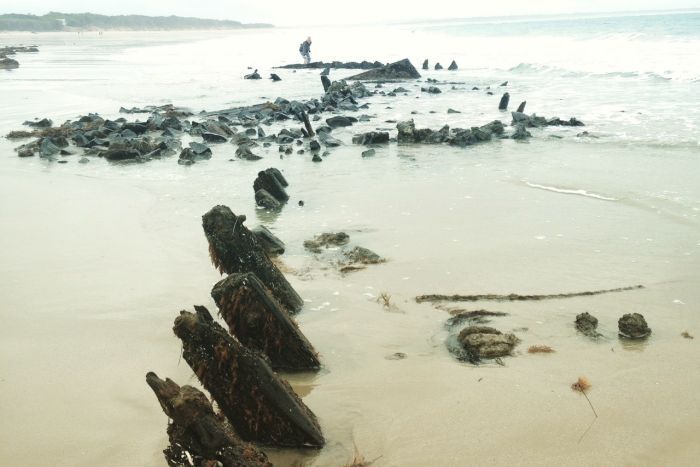
(Source: Heritage Victoria)
What do we know about the Amazon so far?
Source: Information leaflet distributed by Heritage Victoria (Sept 2018)
The Amazon shipwreck is an archaeologically significant example of an international wooden trading ship from the mid-19th century. While Victoria has several iron and steel international cargo carrying shipwrecks, the Amazon is rare as a very early example of a wooden international cargo carrier.
Amazon was built in 1855 at Jersey, one of the British Channel islands. The three-masted barque soon entered the international cargo trade operating between the UK, Australia and South America.
On 12 December 1863, Amazon left Melbourne bound for Mauritius with a cargo of salted meats. During a storm, some vital sails were damaged and Amazon began to drift close to shore. By 10am on 14 December, the vessel ran aground onto the beach at Inverloch where it currently remains.
The crew were exhausted after remaining on deck for 48 hours straight, and did not make it to shore until 3pm in the afternoon. They set up tents on the beach the next day and searched the nearby area for signs of inhabitants.
Nobody was sighted until the 21 December when a Mr Heales was passing close by and saw a distress flag flying. He escorted Captain Ogier to Melbourne who raised the alarm. The crew remained near the Amazon and were soon rescued by H.M.C.S Victoria.
See the Australian National Shipwreck Database for more information.
All shipwrecks in Victoria are protected.
Under the Heritage Act 2017 (Vic) and the Commonwealth Historic Shipwrecks Act 1976 all shipwrecks are protected, whether they are located on land or underwater.
Historic shipwrecks are fragile structures that often have weakened and vulnerable hull remains due to their long submersion. There are sometimes loose artefacts on the beach surface or near historic shipwrecks that can also be easily damaged and destroyed.
Disturbing the site drastically reduces the amount of information that archaeologists can learn about this significant shipwreck.
It is therefore important that the local community ensure that this important site remains undisturbed. This includes any excavation, removing any items and/or disturbing the site.
What can you do?
It is Heritage Victoria’s intention to carry out further archaeological site recording and research. We hope to learn more about the Amazon, its story and its significance to Victoria and specifically to the Inverloch community.
In the interim, we are keen to engage with the local community between now and the end-of-year to assist in monitoring the site.
If you notice any changes to the site, photos and an update would be greatly appreciated!
For further information, please contact Heritage Victoria via maddy.mcallister@delwp.vic.gov.au or (03) 9938 6894.
Additional Information
The Amazon 1863 Project – A dedicated team of locals working to preserve the remains & history.
More details provided to us by Maritime Historian, Mr Doug Ford. Jersey Archive
Channel 9 Gippsland News report 21/9/2019 via Facebook
Archaeologists to uncover buried secrets of 150-year-old Inverloch shipwreck
By ABC Gippsland – Nicole Asher
Video on Youtube posted Jan 2016: https://www.youtube.com/watch?v=CUWSSpfKTTM
A full description of the storm & wreck by the ship’s Captain Ogier:
https://trove.nla.gov.au/newspaper/article/64630434
Shipbuilding in Jersey (Channel Islands, UK)
https://www.theislandwiki.org/index.php/Picture_gallery_of_Jersey_shipbuilding
https://www.theislandwiki.org/index.php/Ship_building
